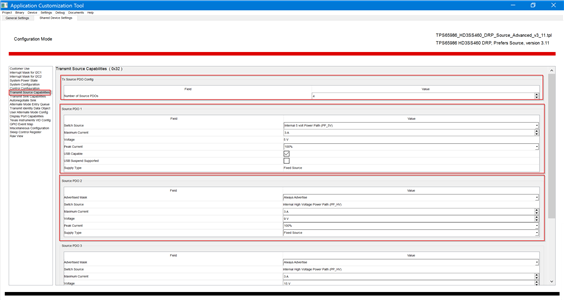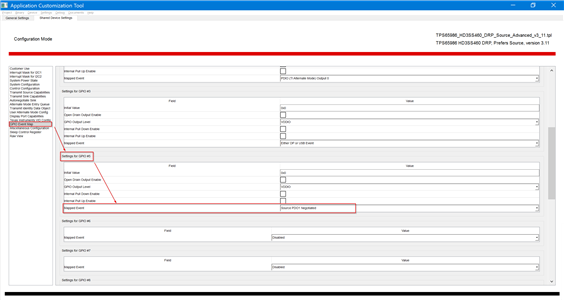Other Parts Discussed in Thread: BQ25703, TPS65983B, TPS65981
Hi Team,
I am planning to use the TPS65986 USB-C PD Controller and the BQ25703 on my design. I are struggling however to figure out how to communicate the amount of available current from the PD chip to the battery charger.
I would like to use the GPIOs on the TPS65986 to set the voltage on the ILIM_HIZ pin using a resistor network. The problem is that there doesn’t seem to be any output events that allow us to get the negotiated PDO/current level onto the GPIOs of the TPS65986.
Does TI have a recommended way to get these products to work together without resorting to an MCU?
Thanks for the support.
Regards,
Hayden



